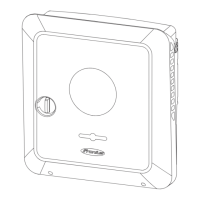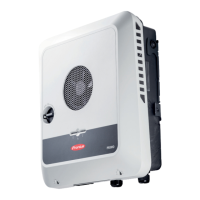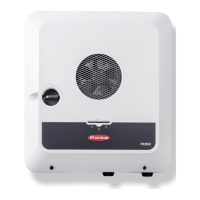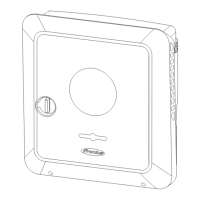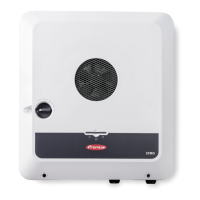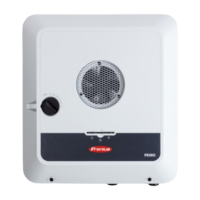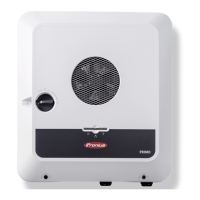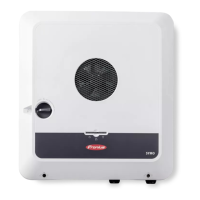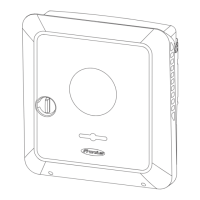Energy management
Maximum per-
mitted battery
charging from
the public grid
New rules for charging batteries will apply in Germany from 1 January 2024. The
maximum charging power from public grids is 4.2 kW when controlled in accord-
ance with Section 14a of the EnWG (Law on the Fuel and Electricity Industries).
The inverter must establish a connection to Solar.web for documentation pur-
poses and be permanently connected to the internet in order to be able to prove
the implementation of the external control commands.
The charging power is limited to a value below this by default. Make sure not to
use more than the allowed 4.2 kW charging power.
Energy manage-
ment
"Self-Consumption Optimization"
Set the operating mode to "Manual" or "Automatic". The inverter always regu-
lates to the set "Target Value at Feed-In Point". In the "Automatic" operating
mode (factory setting), an adjustment is made to 0 W at the feed-in point (max-
imum self-consumption).
The "Target Value at Feed-In Point" also applies if a further source feeds into this
Smart Meter. However, in this case:
-
The Fronius Smart Meter must be installed and configured at the feed-in
point.
-
The "Allow battery charging from additional producers in home network"
function must be activated in the "Components" → "Battery" menu area.
"Target Value at Feed-In Point"
If "Manual" has been selected under Self-Consumption Optimization, the "Oper-
ating Mode" ("Consumption"/"Feed-In") and the "Target Value at Feed-In Point"
can be set.
IMPORTANT!
"Self-Consumption Optimization" has lower priority than "Battery Manage-
ment".
External producers (only possible with active battery)
If further decentralised producers are installed in the house, and these are incor-
porated into the self-consumption control of the Fronius Hybrid inverter, the set-
ting "Allow battery charging from additional producers in home network" must
be activated in the menu area "Device Configuration" → "Components" (see
Components on page 108
.This means that energy can be drawn from the home network and fed into the
battery via the Fronius inverter (battery support required). You can restrict how
much power is consumed by the Fronius inverter by specifying the maximum AC
power (AC max.). A maximum power consumption of the AC rated power of the
Fronius inverter is possible.
"Battery Management"
Using the time-dependent battery control, it is possible to prevent or restrict
charging/discharging of the battery and to specify a defined charging power.
Battery management is influenced by the following settings, for example:
-
Permitted battery charging from the public grid
-
Power limitation of the inverter, energy storage device or overall system
-
Control specifications via Modbus
-
Self-consumption optimization
IMPORTANT!
The defined rules for battery control have the second lowest priority after Self-
113
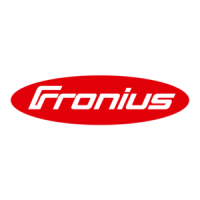
